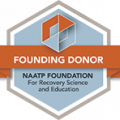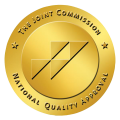Recovery from substance abuse of any kind is normally a process that takes time. It is typically a structured procedure that follows an orderly schedule, with each phase serving a specific purpose all intended to help the person recover and stay away from substance abuse permanently. There is, however, a method that supposedly allows a person to detox much faster than the norm, known as rapid detox.
What is Rapid Detox?
 Rapid detox was a concept first used in the 1980s to help people deal with opioid abuse and then and is now being marketed as a quick and painless solution for opioid addiction. While this might sound nothing short of miraculous, rapid detox is being seen as unable to deal with the severe damage done by opioid addiction.
Rapid detox was a concept first used in the 1980s to help people deal with opioid abuse and then and is now being marketed as a quick and painless solution for opioid addiction. While this might sound nothing short of miraculous, rapid detox is being seen as unable to deal with the severe damage done by opioid addiction.
This is due to the fact that rapid detox lacks the components included in traditional rehabilitation programs used to treat a substance abuse disorder. The main focus of rapid detox lies in condensing the typical withdrawal process, which would usually run for a couple of weeks, into a few hours.
Anesthesia is used to put the patient in a deep sedated state. While heavily sedated, doctors would administer medications that would flush the opioids out of the body. If no complications arise from the process, the patient is released within 48 hours of the procedure.
What are the Benefits of Rapid Detox?
While the entire procedure of rapid detox does sound too good to be true, it is not without benefits.
Expedited Detoxification
Medical detoxification is the first step in any kind of rehabilitation process designed to treat a person with a substance abuse disorder. While brief compared to the lengthier process of therapy, medical detox is the most uncomfortable phase, as this is where the patient is made to stop taking substances.
This process of stopping substance use triggers the start of the body readjusting its internal chemistry to what it was before the substance abuse. This process is one of the most difficult parts of treatment because of what the patient goes through while in it. The experience patients go through is anything from highly uncomfortable to physically debilitating. There are also instances where it could become life-threatening due to complications.
Withdrawal Symptoms Kept to a Minimum
A patient is typically kept heavily sedated throughout the entire process of a rapid detox, so as to spare them the terrible withdrawal symptoms that manifest when the substance is flushed out of the body.
As such, the patient does not suffer most of the agony that many who go through traditional medical detox experience. This does not mean, however, that the patient is completely spared from all the effects of withdrawal. Some symptoms tend to linger all the way to the time when the patient is typically in therapy had they gone through traditional detox and rehab.
Toxins are Flushed Out Faster
Traditional medical detox also necessarily includes a phase where the toxins and remaining substances are flushed out of the system. This is important as recovery cannot really proceed for as long as substances remain in the body.
As someone going through rapid detox is kept under heavy sedation, the extreme discomfort felt during the detox process does not become a major concern. Being unconscious spares the patient from the worst of it, although any lingering pain or discomfort from the process is sure to be felt once the patient fully recovers from the sedative.
What is the Downside to Rapid Detox?
 Most medical personnel in rehabilitation facilities will not recommend rapid detox as a viable alternative to traditional medical detox mainly because of the dangers involved in the process.
Most medical personnel in rehabilitation facilities will not recommend rapid detox as a viable alternative to traditional medical detox mainly because of the dangers involved in the process.
The human body undergoes significant changes when someone gets into a habit of illegal substances. Over time, these changes become what passes for “normal” for the body, as the person continues to take substances. When a person suddenly stops taking the substances, however, the body experiences a shock to the system, and without the substances in the body, it readjusts to the state before the substances changed everything. This reversion is also another shock to the body.
These radical changes are highly stressful to the mind and body, which is why traditional medical detox follows a structured pattern where the body is allowed to acclimate to the changes. Rapid detox does not have this acclimation period, as it is designed to be a fast-track path to detoxification.
There have been documented adverse effects suffered by people who went through rapid detox, including:
- Heart attack
- Complications associated with cardiac disease
- Suicidal ideation
- Aggravation of co-occurring mental health disorders
- Aspiration pneumonia (when saliva or vomit is breathed into the lungs or airways while the person is unconscious)
- Relapse
- Pulmonary edema (a condition caused by excess fluid in the lungs)
- Cardiomegaly (enlarged heart)
- Electrolyte abnormalities (a byproduct of medications that flushes out drugs)
- Diarrhea
- Weakness
- Blurred vision
- Increased chances of dehydration
- Death
Is Rapid Detox More of a Risk than a Cure?
There are many medical professionals who have spoken out against the practice of rapid detox mainly because it carries with it more risks than benefits. On top of that, the risks are such that the patient could end up in a significantly worse state than before.
Overdose Risk
While rapid detox does the job of ridding the body of the substances that are slowly killing it, it does nothing to curb the urges to take the substances once more after the detox.
In fact, there are cases where those who went into relapse after a rapid detox actually suffered an overdose, because of an increased intake of abused substances. The period after the initial drug purge from rapid detox apparently only served to increase their need for the substance. The increased need, however, almost guarantees that the person will binge on whatever substance they use, which could very well lead to an overdose.
Unaddressed Mental Health Issues
An essential element of addiction rehabilitation is the therapy that fills most of the hours the patient spends in treatment. These hours are dedicated to addressing the mental state of the patient following a medical detox, and the consequent therapy intended to help the patient maintain sobriety.
This is important because the therapy does to the mind what the medical detox did to the body, which is purge it of the harmful effects of substance abuse. Anyone who went through one form of addiction or another is bound to have some kind of adverse mental condition going on, and therapy is where this is dealt with.
Rapid detox, however, does not have this component. Once the medication administered while the patient is sedated has completed its job of flushing out the substances, the patient is allowed to go home. The only thing addressed in rapid detox is the physical aspect involved, while the psychological aspect is not touched at all.
Increased Risk of Relapse
The fact that the rapid detox does not address the psychological issues relevant to addiction practically guarantees that once the urges come back, the patient will not hesitate to use substances again. This is because nothing was done to condition the mind to resist the urges of using substances again.
On top of that, if the patient had psychological issues before the substance abuse, these issues could have become much worse during the time that the patient was fully immersed in the addiction. For those who believe it was a mental health condition that pushed them to addiction, this same issue could push them right back into substance abuse after the rapid detox, since the issue is still there and was never dealt with.
Aggravated Physical Condition
One of the major concerns regarding rapid detox is the fact that the process rushes things that should be done over a carefully planned schedule. It should be noted that there are profound changes that happen in the body when one has been in substance abuse for a long time.
To simply change everything in a matter of hours is sure to have a detrimental effect on the body of a person that was already ravaged, not to mention not given enough time to acclimate to the sudden changes done by the rapid detox. There is concern that this could actually aggravate any cardiovascular issues the person might have since a significant shock to the system usually triggers a cardiac arrest.
Let Magnolia City Bring You Through Detox the Proper and Safe Way
Health and safety are things that should always be addressed with maximum care, attention, and responsibility. This is particularly true when it comes to matters relevant to risk and recovery, such as detoxification.
Here at Magnolia City Detox, we never take chances with the health and recovery of the people we help. Our goal is to make sure they are able to enjoy a longer, fuller life free of substance abuse, and to that end, we only employ methods that follow the strictest of safety standards. We never take chances with your recovery, and neither should you. Talk to us now.

















